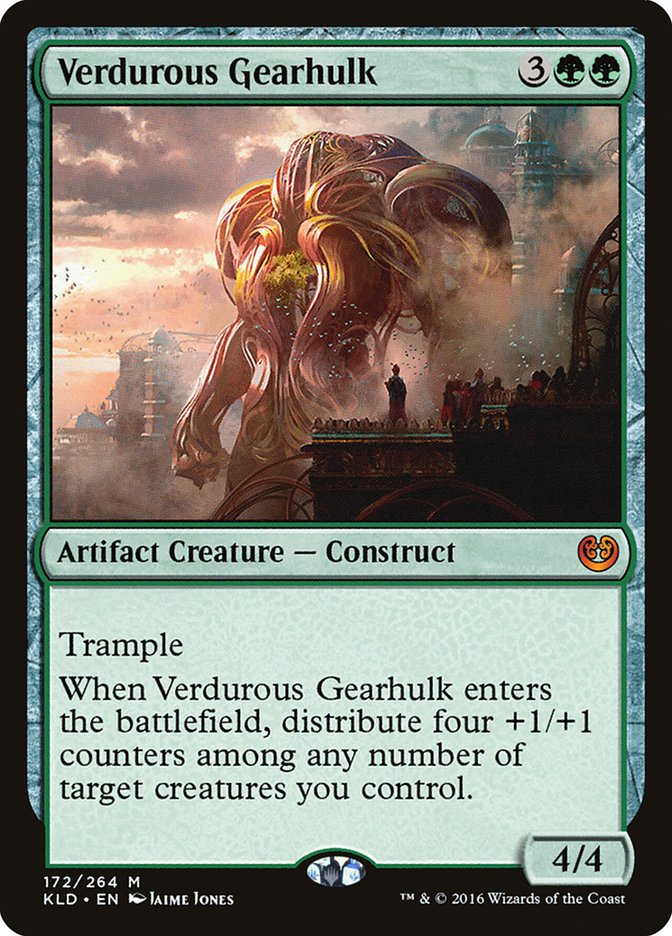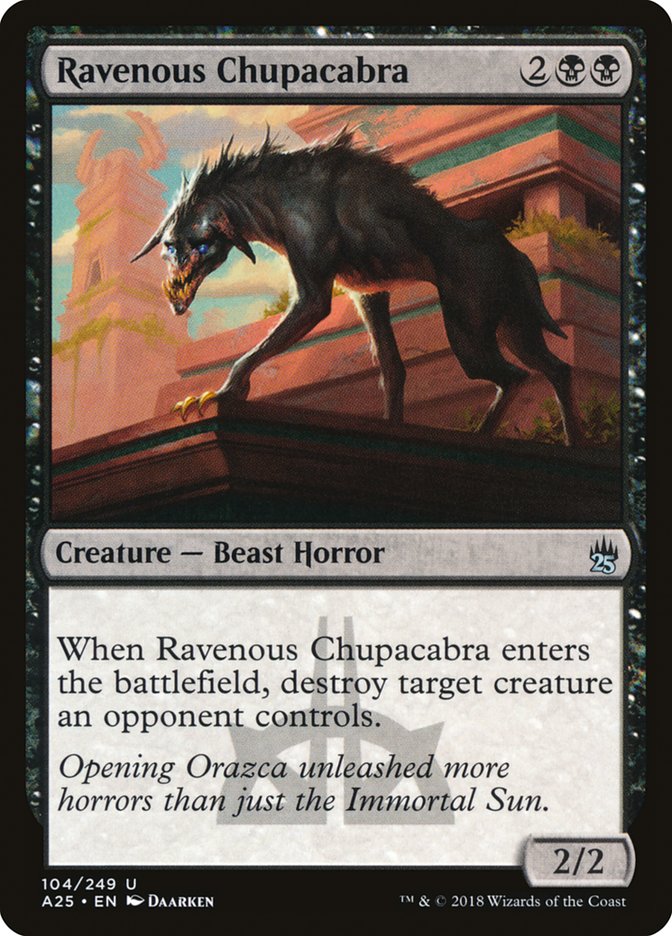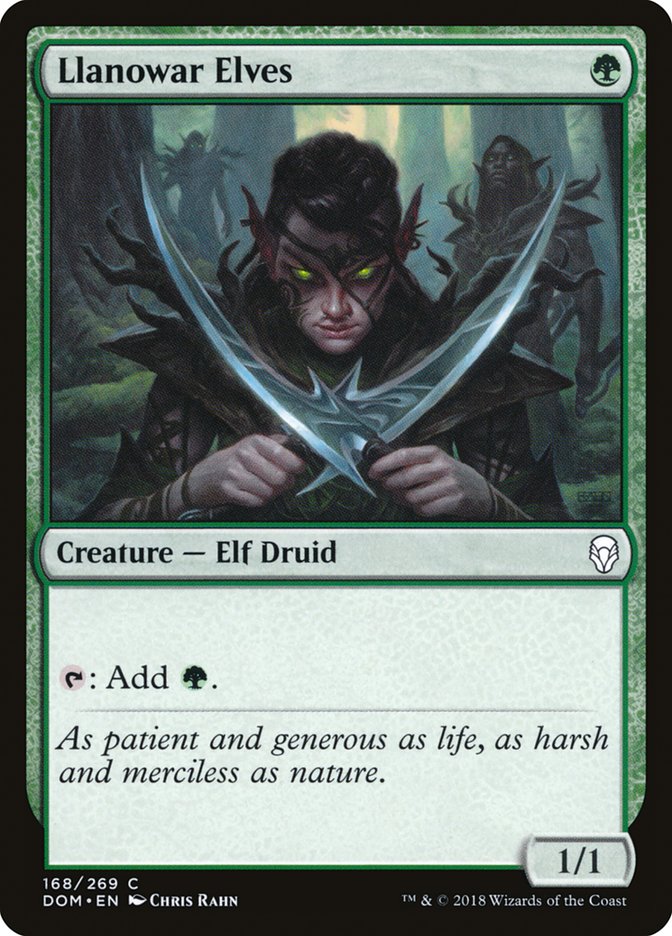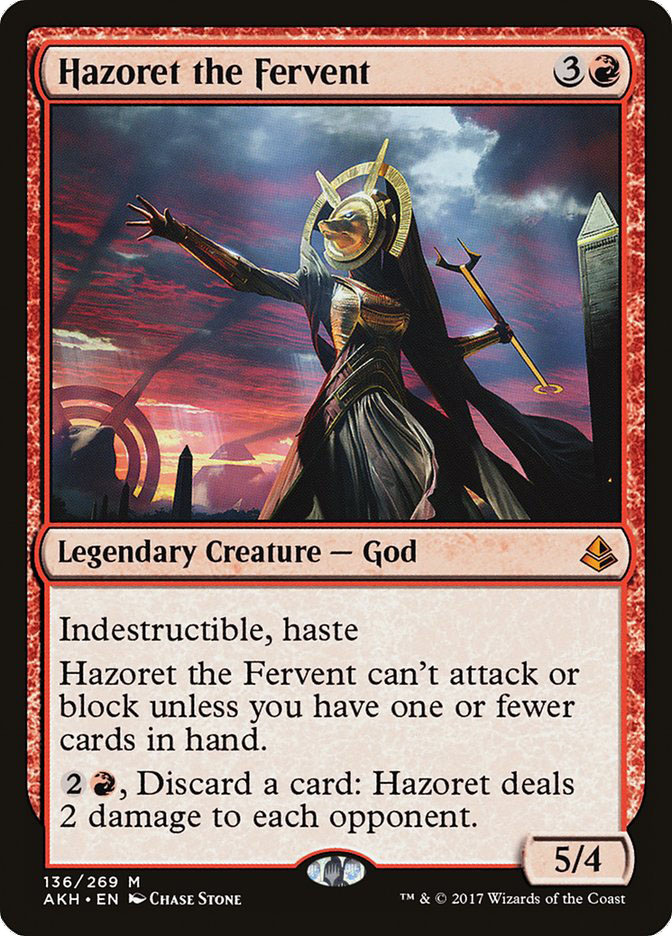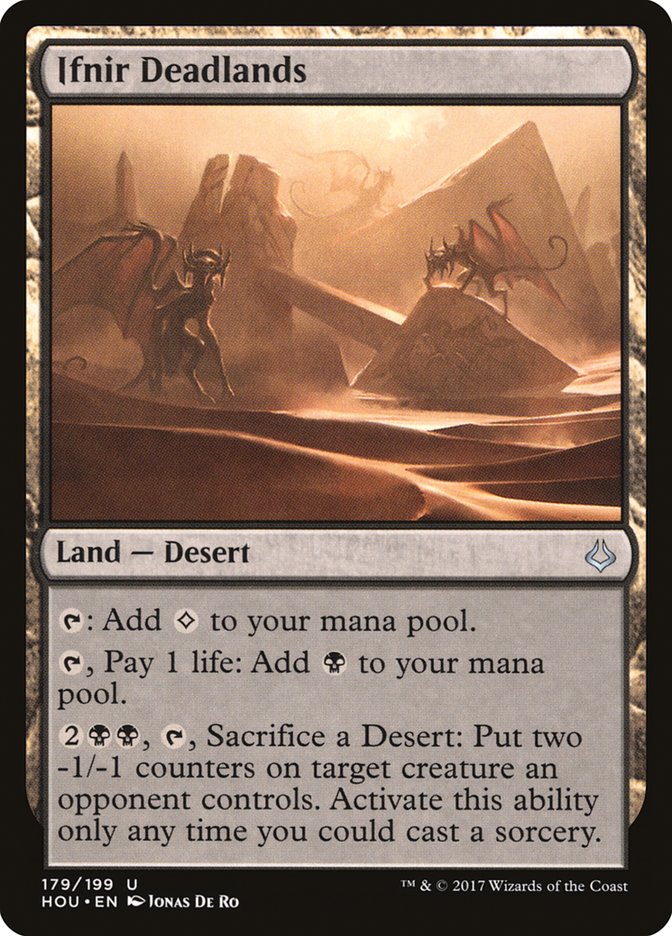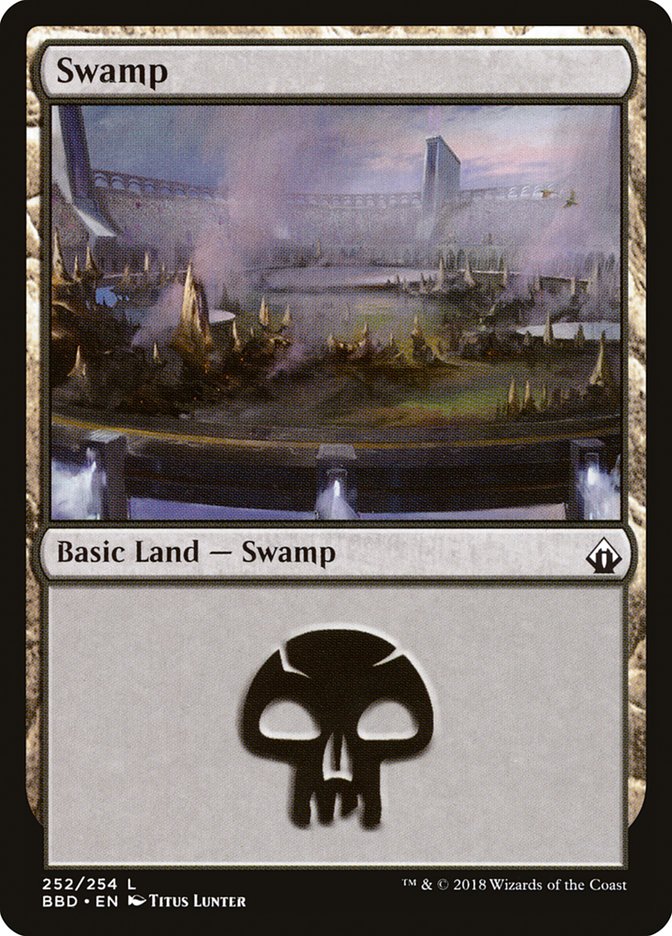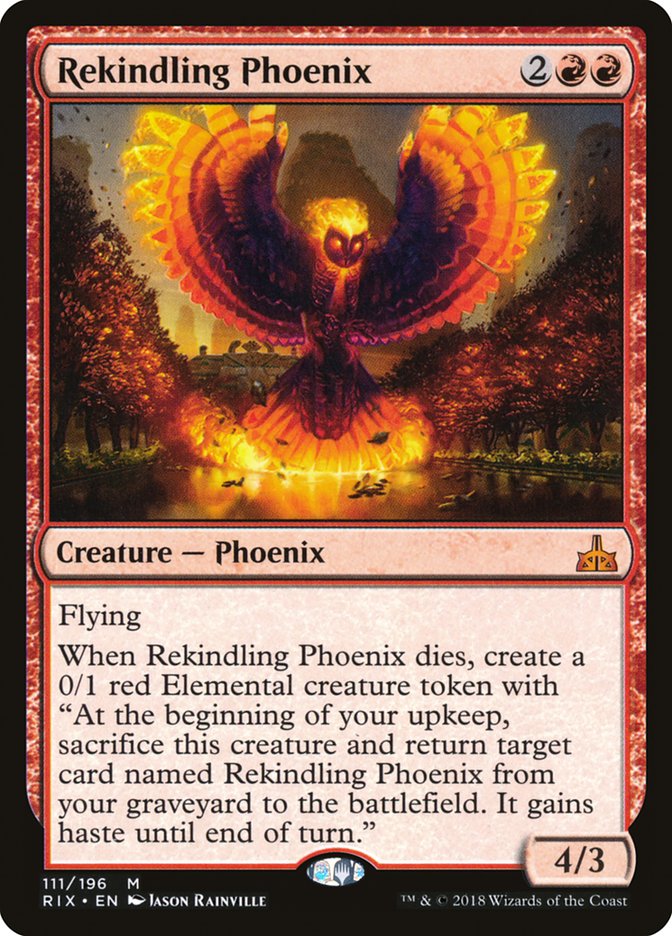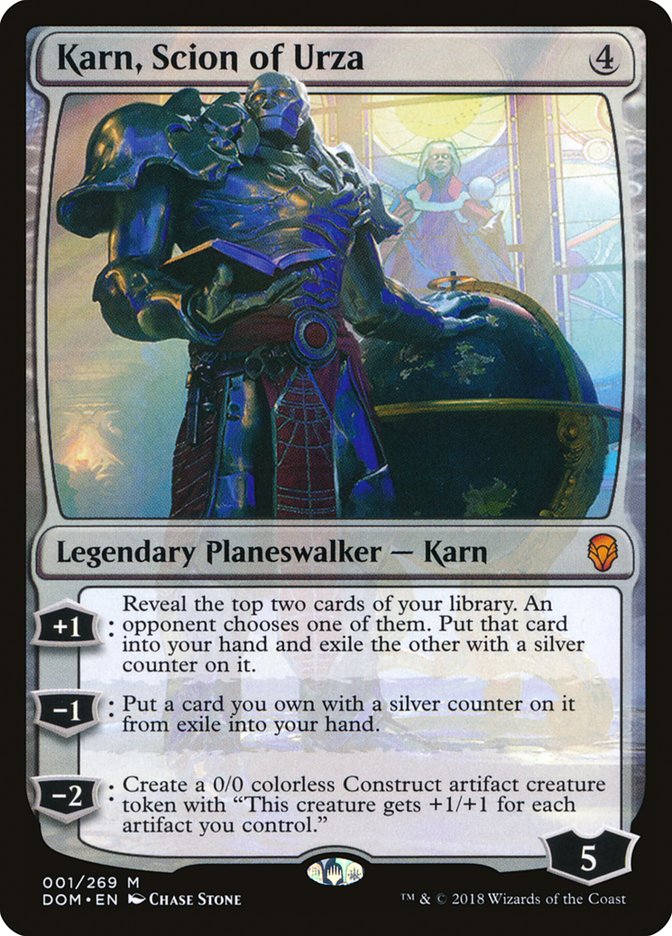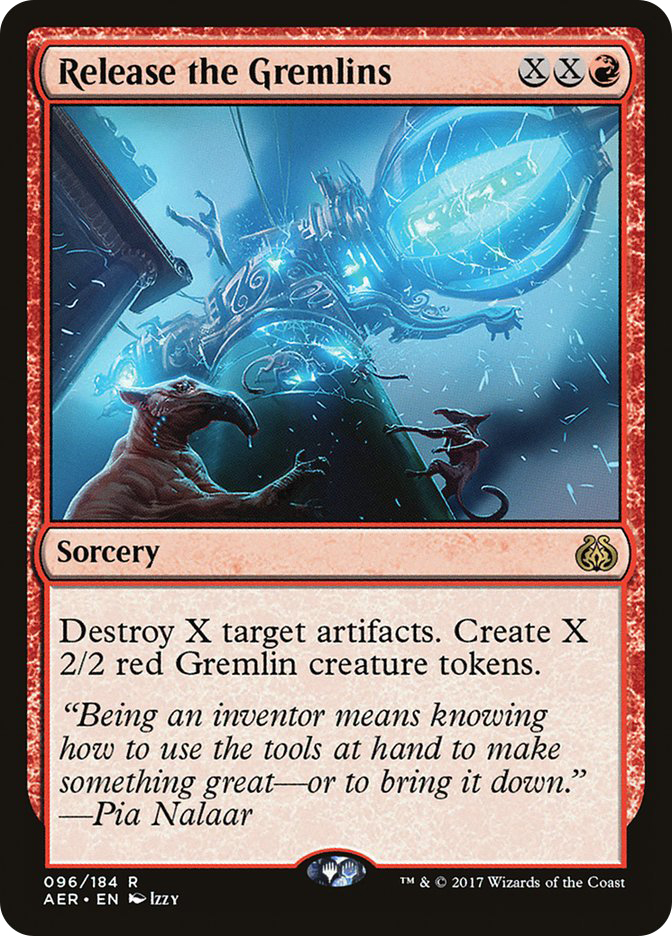In these last few weeks we’ve seen some pretty big shifts in Standard. After R/B Aggro absolutely crushed GP Birmingham, I thought there was a small chance that the format might be unhealthy.
24 copies of Goblin Chainwhirler in the Top 8? That sends a really strong message.
Beyond just pushing out token-based strategies entirely, the ubiquity of Goblin Chainwhirler informs deck construction for any creature-based archetype, which has ripple effects across the format.
However, just like all the best stories go, the truth is just beneath the surface. The real innovation of GP Birmingham was Leo Lahonen’s creatureless U/W Control deck, which preys upon cards like Goblin Chainwhirler and Unlicensed Disintegration.
Since then, that deck has proven itself to be the real deal, so much so that SCG’s very own Brad Nelson sleeved up a copy for GP Toronto despite his distaste for control strategies, earning him and his team a second-place finish.
Planeswalkers (4)
Lands (12)
Spells (44)

At this point, all signs indicate a healthy Standard format. The Top 8 of the SCG Minneapolis Standard Classic last weekend featured eight different archetypes with midrange, aggro, control, and combo all represented. If you play in the Magic Online Standard league queues today, you’ll still see a lot of U/W Control and R/B Aggro, but you’ll also be likely to face G/B Constrictor and Mono-Red Aggro.
These aren’t just a few brewers throwing ideas at the wall to see what sticks. These are proven strategies that appear to be securing themselves a foothold in the format and you can see lists converging as time goes on. As these trends have become solidified and as I’ve had more time to get games in and internalize play patterns, I’ve formed some strong opinions regarding what I think works and what doesn’t in the format. Some of them are just metagame trends that will fade away quickly, but with others I see a consistent pattern.
Eventually, enough is enough and I have to say something!
G/B Constrictor Has to Work to Beat Aggro
After much discussion with opponents and friends over the last few months, I’ve found a lot of people who assume that G/B Constrictor strategies are naturally favored versus aggro, especially red decks.
I’ve also fallen into this trap in the past, but I was disabused of this notion as I was routinely beaten up in the Magic Online Leagues. I’m sure a lot of this originates with the beginning of Aether Revolt Standard, where before Pro Tour Aether Revolt, G/B Constrictor decks were a natural foil to the popular builds of Mardu Vehicles, most of which played Veteran Motorist. It was reinforced last summer after Ramunap Ruins put Mono-Red Aggro on the map.
I remember the good old days playing Mardu Vehicles against Mono-Red. I didn’t have Winding Constrictor, but even my unpowered Walking Ballistas were often enough to blunt Mono-Red’s early aggression to allow me to overpower them in the late-game.
That just isn’t the case anymore for a few reasons. The first is that the vast majority of Mono-Red Aggro builds, along with R/B Aggro and W/B Aggro, almost always have access to a transformational sideboard. Their Game 1 plan might be soft to Winding Constrictor plus Walking Ballista, but in Games 2 and 3 they get to take out most of their flimsy one-toughness threats and load up on spot removal and planeswalkers.
G/B Constrictor decks rely on synergy with Winding Constrictor, and to maximize the potential of Verdurous Gearhulk, they need to have creatures on the battlefield going into Turn 5. The more threats of theirs you can kill, the less powerful each subsequent threat will be.
In addition, Winding Constrictor decks as an archetype have always had problems dealing with large threats. Chandra, Torch of Defiance and Glorybringer are especially problematic because they attack from two angles, killing something immediately and then demanding an answer before they take over the game. There’s also a recent trend of trimming Vraska’s Contempt in favor of Ravenous Chupacabra. This affords you more consistency with Adventurous Impulse, but it’s not doing you any favors against Chandra or Karn.
The second reason is that Goblin Chainwhirler punishes G/B for playing some of its best creatures.
Llanowar Elves was arguably the most hyped card after Dominaria was previewed. Glint-Sleeve Siphoner was one of the defining cards of the last Standard season and can give you an insurmountable advantage…if it lives. In an alternate universe, both would be defining cards in Standard. In this world, though, I’m happy to see them across from me, since I just get to eat them for free. Chainwhirler even makes Walking Ballista a little worse, since it’s risky to just run it out as a 1/1.
I played R/B Aggro at GP Toronto and played against four green decks on Day 1. After each match, I asked my opponent if they sideboarded out Llanowar Elves; three of them said yes. That’s probably correct, but it just feels weird to me. Llanowar Elves seems like one of the reasons to play a green deck in the first place and I’ll never be excited to register a deck and then have to sideboard out one of my best cards when I get paired against the most popular deck in the format.
The third reason is…also Goblin Chainwhirler. This is an example of a secondary ripple effect. People are just simply not playing as many one-toughness creatures in their aggro decks anymore. Where we used to see Fanatical Firebrand and Earthshaker Khenra, now we see a lot more copies of Soul-Scar Mage, Scrapheap Scrounger, and Heart of Kiran.
If you’re playing Winding Constrictor and Walking Ballista, a big part of your equity in the matchup involves beating their maindeck configuration. You’re still a favorite against their Game 1 plan, but not by as much as before, and for Games 2 and 3, your opponents will be well-insulated against Walking Ballista.
For post-sideboard games I see a lot of G/B players loading up on planeswalkers and playing Gonti, Lord of Luxury. That’s definitely a step in the right direction, but it doesn’t address the real problem for G/B: you’re soft to Chandra and Glorybringer. What can you do about that? The easy answer is to play four copies of Vraska’s Contempt in your 75, though I doubt that alone will enough to put you ahead after sideboarding. Another recent trend that looks interesting to me is Shapers’ Sanctuary.
Creatures (32)
- 4 Llanowar Elves
- 4 Verdurous Gearhulk
- 4 Winding Constrictor
- 2 Rishkar, Peema Renegade
- 4 Glint-Sleeve Siphoner
- 4 Walking Ballista
- 2 Merfolk Branchwalker
- 4 Jadelight Ranger
- 4 Ravenous Chupacabra
Lands (15)
Spells (13)

I have yet to play against this from the R/B Aggro side, but in theory this card is a nightmare for the red player. My plan is to kill absolutely everything in sight. Barring an early Glorybringer, most games I win tend to be pretty grindy. Shapers’ Sanctuary might just be the perfect foil to that plan.
All of this isn’t to say that G/B Constrictor isn’t a good deck right now. It’s a solid choice against U/W Control. That seemed counterintuitive to me at first, but Glint-Sleeve Siphoner is great in the matchup. With a sideboard full of planeswalkers, hand disruption, and Lifecrafter’s Bestiary, you should be a good position to slowly grind your control opponent down. I also want to be clear that I don’t think the deck is a massive dog to aggressive strategies, as it certainly has the tools to fight them. The takeaway here is just that if you expect a lot of R/B or Mono-Red Aggro in your next event, and you wouldn’t normally play G/B Constrictor, that’s not a reason to play it.
Instead, consider some Hazorets of your own.
Creatures (28)
- 1 Pia Nalaar
- 4 Bomat Courier
- 4 Scrapheap Scrounger
- 2 Kari Zev, Skyship Raider
- 2 Glorybringer
- 2 Hazoret the Fervent
- 3 Soul-Scar Mage
- 2 Earthshaker Khenra
- 4 Rekindling Phoenix
- 4 Goblin Chainwhirler
Planeswalkers (2)
Lands (24)
Spells (6)

I have mixed feelings about this list, so let’s just start with what I like. Hazoret the Fervent is still a powerful Magic card, and red still has no good way to kill it. It’s the best card in the Mono-Red mirror, as players are forced to either race it or assemble a combo of Soul-Scar Mage plus one or more red removal spells. R/B Aggro is in pretty much the same spot. Because they need to be able to consistently cast Goblin Chainwhirler, they can’t afford the double black for Vraska’s Contempt. Hour of Glory is an option, but there’s usually only a single copy, if it’s even played at all.
What’s left but a few copies of Doomfall and a single The Eldest Reborn? Those certainly can kill Hazoret, but anyone who has ever been on the business end of a Mono-Red assault knows that’s easier said than done. Hazoret naturally comes with an army of cheap bodies and clearing the battlefield for your Diabolic Edict is troublesome. Even when you successfully kill the first Hazoret, it’s generally after taking at least one hit from it and a second copy is usually lights out.
The one-toughness creatures here are a necessary evil to support Hazoret, and besides, who cares if they kill some creatures for free when you can just ignore their deck with an indestructible God? I especially like Kari Zev against the R/B decks; they don’t play enough black sources to support Fatal Push, so Magma Spray is now the default cheap removal spell.
That’s enough about what I like. Now, before I start my rant, let me just say that I think FestiFan is a great player. So great, in fact, that they can 8-0 with Ifnir Deadlands in this R/B list. This card has seen too much play over the past year. There’s a time and a place for Ifnir Deadlands. To figure out where and when, let’s talk about what this card actually does.
For five mana, you get to effectively cast a bonus removal spell for a two-toughness creature. There are some cases where you can kill larger things with your opponents’ Winding Constrictors, but the vast majority of the time you have to spend your turn tapping out to kill something small. There are spots where this can be the difference between winning and losing, but for most games you’ll have something better to do with your mana on every turn. In decks with a lot of Deserts, you’ll have the option to sacrifice multiple lands over the course of several turns and this can be backbreaking for your opponent, but those decks are rare.
In exchange for this, you have to pay generally no more than one or two life over the course of a game. To me, this seems about fair and there are a lot of places where playing a copy for two is justified. There’s just one more thing, though…
Ifnir Deadlands is not a Swamp.
Nowhere on this card does it say the word “Swamp.” For any deck right now that’s playing Dragonskull Summit, this is critical. If you’re playing red, you’re probably trying to cast Goblin Chainwhirler. If you’re not playing Hazoret, you’re still probably trying to cast Chandra on Turn four and Glorybringer on Turn 5.
Curving out is incredibly important. Having too many lands enter the battlefield tapped is going to cost you games. With one copy of Ifnir Deadlands in the deck, you might think that it this won’t come up that often, but trust me, it does. On top of that, you’re playing red. You have access to some of the best four- and five-drops in standard right now.
You have better things to do with your mana than kill a Ravenous Chupacabra. These cards won’t be in Standard forever, so cast them while you can!
The time and place for Ifnir Deadlands is here:
Creatures (15)
Planeswalkers (4)
Lands (15)
Spells (26)

Although we’re still playing Isolated Chapel, we don’t have any triple colored mana requirements. Additionally, there’s a big difference between this and the R/B decks.
With less spot removal and Karns in place of Chandra and Glorybringer, battlefields tend to stall out more often. Karn ticks up and gives you more lands, so turning four of those into quasi-removal spells is great.
Last, I wanted to throw in a word of caution about sideboarding for the R/B Aggro mirror.
The sight of Release the Gremlins brought with it a pleasant rush of nostalgia. There was a time during Aether Revolt Standard when you could find one or more copies in almost every Mardu Vehicles sideboard. Sideboarded games tended to stall out with both players trying to protect Gideon, Ally of Zendikar with Heart of Kiran and Thopter tokens. A well-timed Release the Gremlins could be devastating. That is, until players started sideboarding out most of their artifacts. I don’t think that people have forgotten about that option.
I’d advise against going deep on this card, and I’d probably leave it out of the sideboard altogether. Abrade exists now and most lists run a lower artifact count. Chandra and Glorybringer play differently from Gideon and games tend to stall out less often, so the dream scenario of casting Release for two or more is less common.
All right, that’s enough negativity for one week. Don’t let it fool you; I’m continually impressed with the new innovations in this current Standard. The Pro Tour is this weekend and I’m excited to see if the format will continue to evolve.





